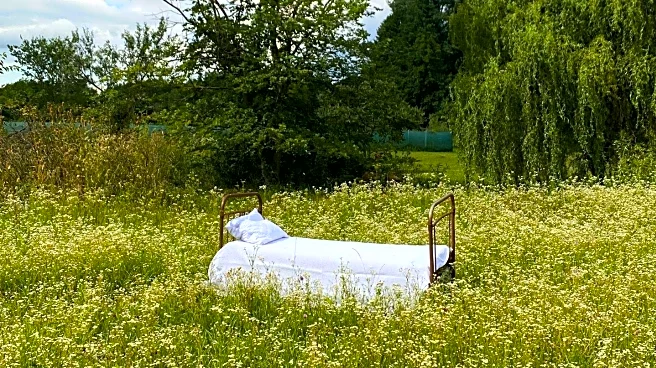What's Happening?
Kent Wildlife Trust, a charity managing 80 sites, has launched the Nature Nightmares Appeal in response to increasing vandalism and antisocial behavior across its parks and woodlands. The organization reports that these incidents have cost them tens of
thousands of pounds annually, funds that could have been allocated to vital conservation work. Jessica Allam, the senior wilder grazing ranger, highlighted that the Blue Bell Hill site has been particularly affected, with volunteers frequently cleaning up litter, fireworks, and smashed plates due to a social media trend called 'letting go.' This trend involves individuals writing grievances on plates and smashing them for emotional release. Additionally, the charity has faced issues with out-of-control dogs attacking cattle and damage to educational benches and bird viewing screens.
Why It's Important?
The vandalism not only incurs financial costs but also disrupts conservation efforts and poses risks to wildlife. The funds spent on repairs could otherwise support the charity's mission to protect and preserve natural habitats. The incidents also highlight a broader societal issue of antisocial behavior and the impact of social media trends on public spaces. The appeal aims to raise awareness and funds to safeguard wildlife and take action against those causing harm. This situation underscores the need for community involvement and support to maintain and protect natural environments.
What's Next?
Kent Wildlife Trust plans to use the funds from the Nature Nightmares Appeal to enhance security measures and repair damages. The charity is also likely to engage with local communities and authorities to address the root causes of vandalism and promote responsible behavior. Increased awareness and support from the public could lead to more effective conservation efforts and a reduction in antisocial activities. The trust may also explore partnerships with other organizations to strengthen their conservation initiatives.
Beyond the Headlines
The rise in vandalism at Kent Wildlife Trust sites reflects a growing challenge for conservation organizations worldwide. It raises questions about the role of social media in influencing behavior and the responsibility of individuals to protect shared natural resources. The situation also highlights the importance of education and community engagement in fostering a culture of respect for the environment. Long-term solutions may involve collaborative efforts between charities, local governments, and the public to create sustainable strategies for conservation and community involvement.













